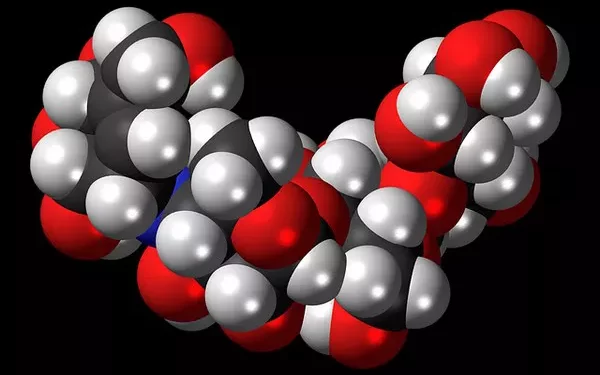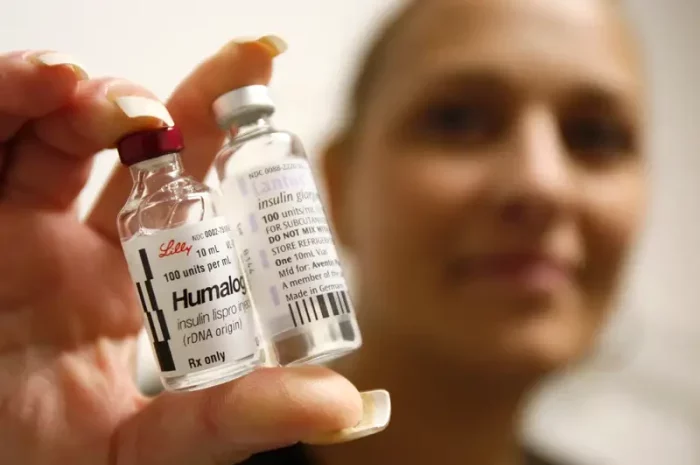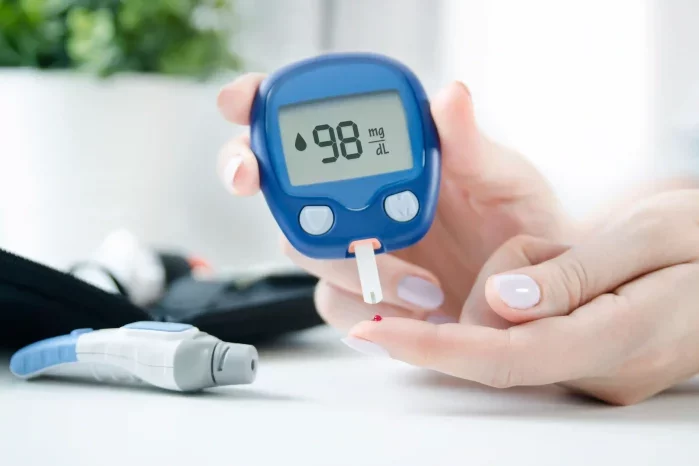Type 1 diabetes is a chronic condition characterized by the body’s inability to produce sufficient insulin, leading to high blood sugar levels (hyperglycemia). Central to managing type 1 diabetes is a comprehensive understanding of two critical components: insulin and glucose. These substances play pivotal roles in the body’s metabolism, and their delicate balance is essential for maintaining health and well-being.
In this article, we delve into the fundamental differences between insulin and glucose, their respective functions in the body, and how their interplay affects individuals living with type 1 diabetes. Understanding these concepts is crucial for healthcare professionals, patients, and caregivers involved in the management of this complex condition.
Insulin: The Key to Glucose Regulation
Insulin is a hormone produced by the beta cells of the pancreas. Its primary role is to regulate the amount of glucose in the bloodstream by facilitating its uptake into cells where it can be used as a source of energy. This process is crucial for maintaining stable blood sugar levels, as excessive glucose in the blood can lead to various health complications over time.
Insulin Production and Mechanism of Action
In individuals without diabetes, insulin is produced continuously by the pancreas in response to elevated blood glucose levels, such as after meals. This secretion is finely tuned to match the body’s metabolic needs, ensuring that cells receive adequate glucose for energy production.
Upon secretion into the bloodstream, insulin binds to insulin receptors on cell membranes, particularly muscle, fat, and liver cells. This binding triggers a series of biochemical reactions inside the cells that facilitate the transport of glucose from the bloodstream into the cell interior. Here, glucose can either be metabolized for immediate energy or stored as glycogen (in muscles and liver) for later use.
Role of Insulin in Carbohydrate, Fat, and Protein Metabolism
Beyond its primary role in glucose regulation, insulin also influences the metabolism of other macronutrients:
Carbohydrates: Insulin promotes the uptake of glucose into cells, thereby lowering blood glucose levels after a meal rich in carbohydrates.
Fats: Insulin facilitates the storage of excess glucose as fat (triglycerides) in adipose tissue when energy needs are met, contributing to weight gain if caloric intake exceeds expenditure.
Proteins: Insulin enhances protein synthesis by promoting the uptake of amino acids into cells, supporting tissue repair and growth.
Glucose: The Body’s Primary Energy Source
Glucose is a simple sugar and the body’s preferred source of energy. It is derived from the digestion of carbohydrates in food and is absorbed into the bloodstream, where its concentration is tightly regulated by insulin. Maintaining stable blood glucose levels (normoglycemia) is essential for the proper functioning of organs and tissues throughout the body.
Sources of Glucose
The primary sources of glucose include:
Dietary Carbohydrates: Found in foods such as bread, pasta, fruits, and vegetables.
Glycogen: Stored form of glucose in the liver and muscles, which can be broken down into glucose when needed.
Gluconeogenesis: The production of glucose from non-carbohydrate sources, such as amino acids and glycerol, primarily occurs in the liver during fasting periods.
Glucose Homeostasis
The body maintains glucose homeostasis through a complex interplay of hormones, primarily insulin and glucagon:
Insulin: Lowers blood glucose levels by promoting cellular uptake and storage of glucose.
Glucagon: Raises blood glucose levels by stimulating the breakdown of glycogen into glucose and promoting gluconeogenesis in the liver.
Together, insulin and glucagon work synergistically to ensure that blood glucose levels remain within a narrow, optimal range (typically 70-130 mg/dL) under varying physiological conditions.
Type 1 Diabetes: Disruption of Insulin Production
Type 1 diabetes results from autoimmune destruction of the pancreatic beta cells responsible for insulin production. This autoimmune attack leads to an absolute deficiency of insulin, disrupting the body’s ability to regulate blood glucose levels effectively.
Pathophysiology of Type 1 Diabetes
The pathophysiology of type 1 diabetes involves several key mechanisms:
Autoimmune Destruction: Immune-mediated destruction of beta cells in the pancreas results in insufficient insulin production.
Hyperglycemia: Decreased insulin levels lead to elevated blood glucose levels, causing symptoms such as increased thirst, frequent urination, and fatigue.
Ketosis: In the absence of sufficient insulin, the body breaks down fats for energy, leading to the production of ketones. Accumulation of ketones in the blood (ketosis) can result in diabetic ketoacidosis (DKA), a life-threatening complication.
Treatment Strategies for Type 1 Diabetes
Management of type 1 diabetes focuses on replacing the deficient insulin through exogenous (external) insulin administration. This approach aims to mimic the physiological release of insulin and maintain near-normal blood glucose levels throughout the day.
Insulin Therapy Options
Modern insulin therapy involves the use of different types of insulin analogs, each with specific onset, peak, and duration characteristics:
Rapid-acting Insulin: Mimics the rapid onset of insulin release after meals.
Short-acting (Regular) Insulin: Provides a slower onset of action and longer duration than rapid-acting insulin.
Intermediate-acting Insulin: Has a slower onset and longer duration than rapid or short-acting insulins, providing basal insulin coverage.
Long-acting Insulin: Provides a steady level of insulin throughout the day, mimicking basal insulin secretion.
Delivery Methods
Insulin can be administered through various delivery methods:
Insulin Injections: Subcutaneous injections using syringes, pens, or pumps.
Insulin Pumps: Continuous subcutaneous insulin infusion devices that deliver rapid-acting insulin throughout the day, with mealtime boluses.
Inhaled Insulin: Rapid-acting insulin delivered through inhalation at mealtime.
Monitoring and Managing Blood Glucose Levels
Effective management of type 1 diabetes requires frequent monitoring of blood glucose levels to adjust insulin therapy and dietary intake accordingly. Monitoring techniques include:
Self-Monitoring of Blood Glucose (SMBG): Using portable glucose meters to measure blood glucose levels multiple times daily.
Continuous Glucose Monitoring (CGM): Real-time monitoring of interstitial glucose levels, providing continuous data trends and alerts for hypo- and hyperglycemia.
HbA1c Testing: Reflects average blood glucose levels over the past 2-3 months, guiding long-term management goals.
Factors Affecting Blood Glucose Levels
Several factors can influence blood glucose levels in individuals with type 1 diabetes:
Carbohydrate Intake: The amount and type of carbohydrates consumed affect postprandial glucose levels.
Physical Activity: Exercise increases glucose uptake by muscles, lowering blood glucose levels.
Illness or Stress: Infections, illness, and stress can increase blood glucose levels due to the release of stress hormones (e.g., cortisol, adrenaline).
Medications: Some medications (e.g., corticosteroids) can raise blood glucose levels, necessitating adjustments in insulin therapy.
Challenges in Type 1 Diabetes Management
Managing type 1 diabetes effectively requires a multidisciplinary approach and presents several challenges:
Hypoglycemia: Excess insulin relative to blood glucose levels can lead to hypoglycemia (low blood sugar), causing symptoms such as shakiness, sweating, and confusion.
Hyperglycemia and Diabetic Complications: Prolonged hyperglycemia increases the risk of diabetic complications, including cardiovascular disease, kidney disease, neuropathy, and retinopathy.
Psychosocial Impact: The daily demands of managing diabetes, including frequent blood glucose monitoring, insulin administration, and dietary restrictions, can impact quality of life and psychological well-being.
Future Directions in Type 1 Diabetes Research
Ongoing research in type 1 diabetes focuses on several key areas:
Beta Cell Regeneration: Strategies to regenerate or replace beta cells destroyed in type 1 diabetes, including stem cell therapy and immunomodulation.
Artificial Pancreas Systems: Automated insulin delivery systems combining CGM with insulin pumps to provide real-time adjustments in insulin delivery based on glucose levels.
Immunotherapy: Interventions aimed at modulating the immune response to preserve remaining beta cell function or prevent autoimmune destruction.
Conclusion
In conclusion, insulin and glucose are pivotal players in the intricate metabolic dance that sustains life. Understanding their roles, interactions, and the disruptions that occur in type 1 diabetes is essential for effective management and improved outcomes for individuals living with this condition. Through advancements in insulin therapy, monitoring technology, and ongoing research, healthcare professionals continue to enhance the quality of life and prognosis for those affected by type 1 diabetes. By fostering awareness and education, we empower patients and caregivers to navigate the complexities of type 1 diabetes management successfully.

























